Zipp Vuka Stealth & Vuka Fit
As you may have heard, Zipp debuted a new integrated aerobar for 2013, dubbed Vuka Stealth. This carbon beauty boasts aerodynamic performance equal to that of the older Vuka Aero, but in a UCI-legal 3:1 base bar (the Vuka Aero was 4:1). They say it works with any standard plug-in brake lever, has multiple extension options, and an integrated Garmin quarter turn mount.
It certainly looks the part:
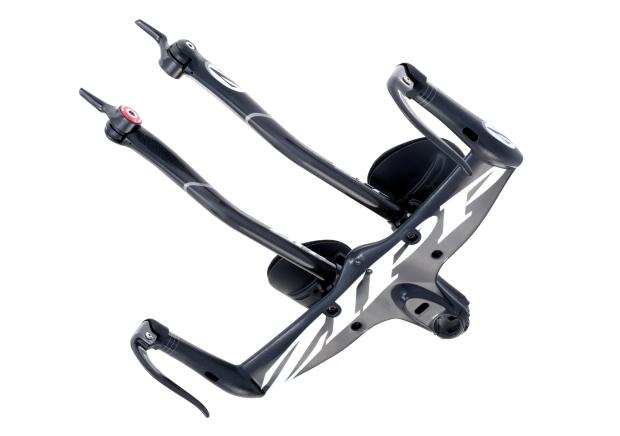
You want to talk about price, weight, and features? Here you go:
—
MSRP: $1,070
Weight: 820g (Medium stem length with Zipp Vuka Race carbon extensions)
Extension diameter: 22.2mm
Ships with integrated stem and basebar, Vuka Stealth extension clamp & armrest clamp, Vuka Stealth risers (two each of 10 mm, 25 mm and 50 mm risers), Vuka armrest pads and Vuka armrest. Also included are a T25 L wrench, carbon paste and a 1/4 turn Zipp Quickview mount with an integrated and proprietary mounting interface.
Extensions sold separately
—
As our friend Forrest Gump said, “That’s all I have to say about that.”
To us at Slowtwitch, all of the features that look nice in a glossy catalog are fine. But if you ask us – they’re gravy. There is a much more important discussion to be had, and a much more important product coming from Zipp. The only problem is that it isn’t a physical product per se, but rather a computer program.
It’s called Vuka Fit.
We’re written about aerobars that feature integrated stems in the past. Traditionally, they offer a substantial, but not insurmountable challenge to the fitter. You must build the bike “from the bars back”. If you want to use a 3T Ventus, there may only be a few frames that allow you to achieve your desired fit. Figuring out which frames work can be a difficult proposition (we dedicated an article to this specific topic, linked at the bottom of this page).
Zipp came up with a solution that was very labor intensive on their end, but makes it a breeze for the end user. How does it work? Let’s dive in.
Vuka Fit
Vuka Fit will be available on the Zipp website, or as a free downloadable iOS app.
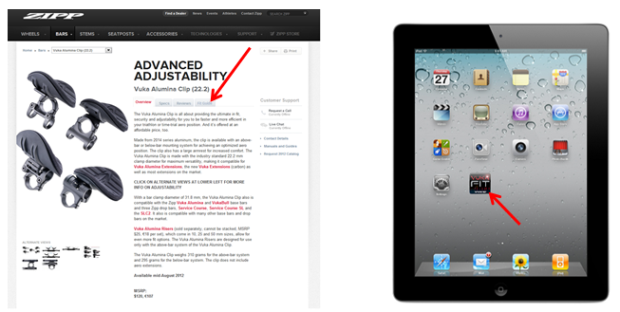
Here’s the idea: You want to buy a Vuka Stealth for your existing bike, or a new bike. You input a few numbers in to the Vuka Fit app, and it tells you exactly how to set up the bars to achieve your fit. That’s it.
When you start the app, you first must choose the bar you want to use:
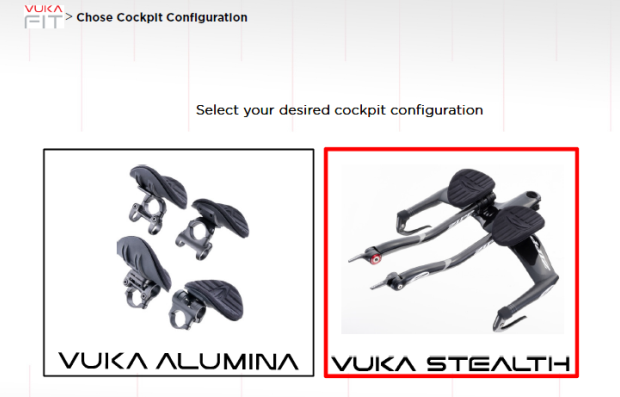
To start, let’s look at the Stealth.
If you’ve been around Slowtwitch for any length of time, you are aware of the terms Stack and Reach. These numbers are now the primary coordinates for choosing a bike based on fit. Stack and Reach refer to the vertical and horizontal distances from the center of the bottom bracket shell to the center and top of the headset.
Zipp uses a similar concept to talk about the coordinates to your aerobar, called Fit Stack and Fit Reach:
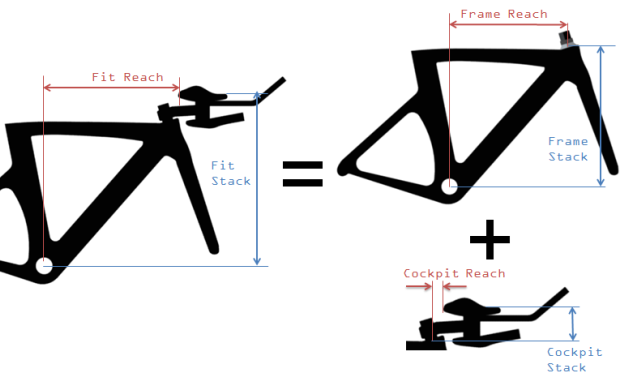
The above image should adequately explain what the intent is. Just to be clear, the termination point for Fit Stack and Reach is the back and top of the aerobar pad – including the pad material itself. Zipp says (and we agree) that the pad material must be included. Yes, the pad will be compressed some amount while the rider is resting their weight on it. There is no perfect answer here; some brands of pad will be thicker or thinner. Some may compress more than others. This is a gray area. If you want to volunteer to force all bar manufacturers to agree on a standard pad thickness and density, please be my guest. For now, simply understand that not all pads are the same, and you should always be prepared to make small adjustments after switching to a new bar (so don’t cut that fork steerer tube all the way down just yet).
How does one go about measuring their Fit Stack and Reach? Let’s look at reach:
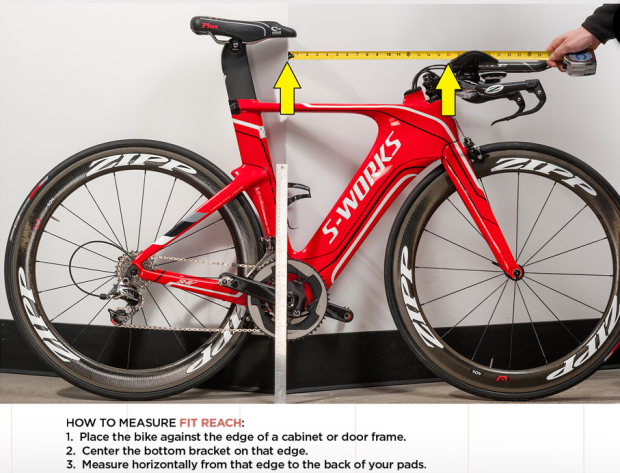
If you have a stand that can hold your bike upright, you could use a long level and a tape measure. If you don’t have that, Zipp suggests using something like the corner of a wall or a door to mark the middle of your bottom bracket (seen above).
For Stack, you must find the vertical distance between the bottom bracket and top/back of the aerobar pad:
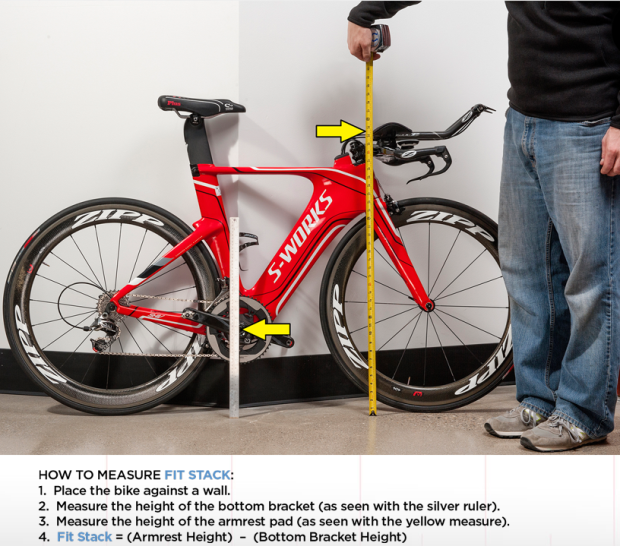
Last, you need to measure your pad width. For this, measure center-to-center. If your existing pads are not symmetrical (i.e. the older Zipp Vuka Aero pads), we suggest that you measure to the lowest point in that pad.
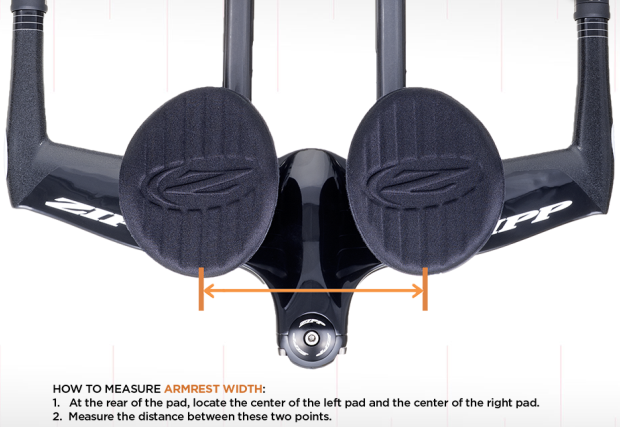
Once you have your numbers, type them in to the Vuka Fit app:
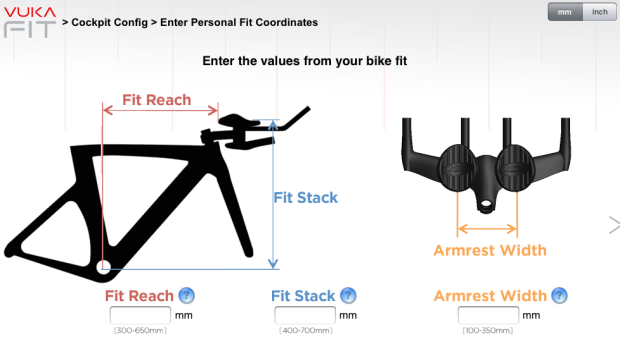
Next, you must enter the traditional Stack and Reach for your frame, along with the height the headset top cap and spacers:
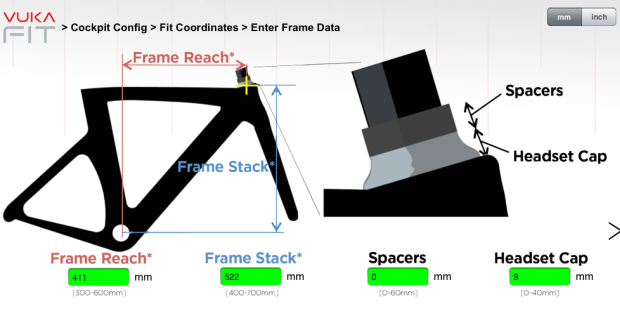
This is where some measure of complication comes in. Even if you’re buying a Vuka Stealth for an existing bike, that doesn’t mean you’re going to know the amount of spacers you need. If your current aerobar has pads that lie X distance above the base bar, and the Stealth has pads that lie Y distance above the base bar, that will change the amount of spacers you need.
To figure this out, we need to know all of those potential distances. Zipp currently provides these specs for the Alumina Clip (seen below), but not the Stealth:
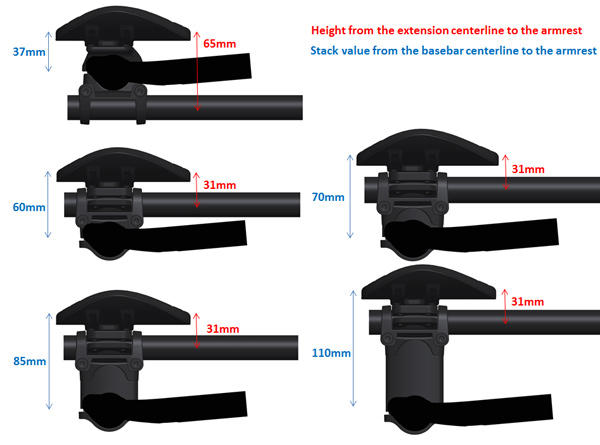
To really figure this out, you would need to know the pad height of your existing bar. Compare that to the Stealth in its various iterations, and use headset spacers to make up the difference. The current version of the software cannot reverse engineer your headset spacers for you – it is only designed to output bar pad spacers.
I spoke at length with Zipp Design Engineer, Ben Waite, and he suggested a simple alternative – start with your top cap height, but no spacers (so the stem is ‘slammed’). The software will figure out what pad spacers get you closest to your desired fit. Waite suggests that the software isn’t intended as a ‘one-and-done’ type of arrangement; users can play with it and figure out a variety of potential setups. You can try it as many times as you want. Also, the software has several built in red flags that will pop up if your numbers are very odd (i.e. if you enter 70mm of headset spacers, it will question your input).
After you’re done with Stack and Reach, you move on to extension choice. This is left up to the user to pick whichever they want:
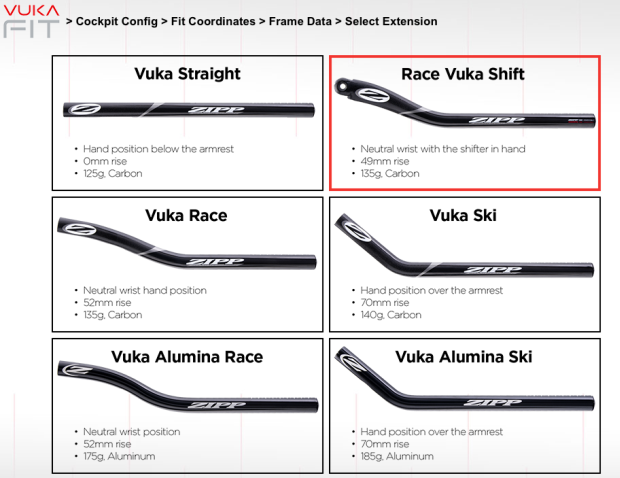
Vuka Fit does not tell you the correct length of your extension – how long you should cut them. The key coordinate is to the top and back of the aerobar pads. Length of the actual extension will vary significantly from person-to-person. Two people could have the same exact height and inseam, but forearms that differ in length by two centimeters; this would obviously result in a different extension length.
Once you’ve input all of the information, Vuka Fit spits some numbers back at you:
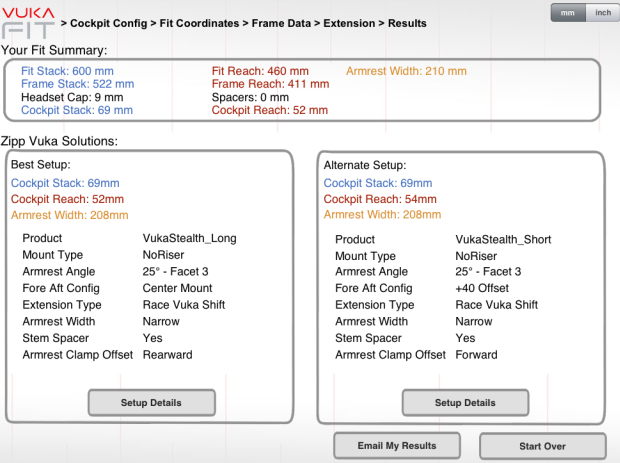
There it is – that’s your fit. Based on your bike’s Stack and Reach, Vuka Fit reverse engineered your aerobar and stem, to achieve your Fit Stack and Reach.
Notice that there are two suggested setups. Based on Zipp’s database of potential fit solutions with this bar (a few thousand total), you’ll either get one or two outputs. If there is a single fit that is within 2mm of your desired stack and reach, you only get one output. If there is more than one, you’ll get the two closest setups.
If you want to see a graphical representation of the above data, click ‘Setup Details’. It will show you this:
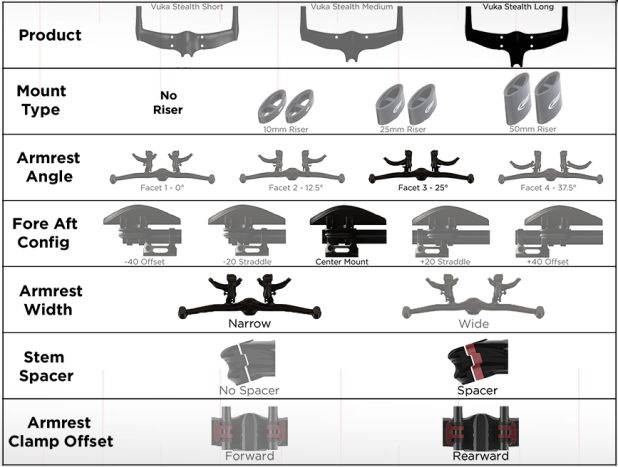
It is important to note that there are two similar terms used. One is “spacers” which refers to your headset spacers – the amount that you entered originally. Below that is “stem spacer” which refers to the Vuka Stealth proprietary stem length spacer (seen above). The Vuka Stealth comes in Short, Medium, and Long. These roughly translate to 60, 80, and 100mm stem lengths, although Zipp suggests that you not buy based on that (they want you to use Vuka Fit to see what is most appropriate for you). Each bar comes with a 10mm ‘stem length spacer’, so there are effectively six lengths of stem. Yes, I did ask the question, “Can you stack the stem length spacers – use more than one on your bar?” The answer was a clear, “No.” You can only use one.
The effective stem length isn’t a super critical piece of the puzzle, in my opinion. The bar offers so much adjustment everywhere else, that you can achieve a large range of fit on any size. You can cut the base bar grip length. You can cut the extensions (or not cut them). You can move the pads every which way:
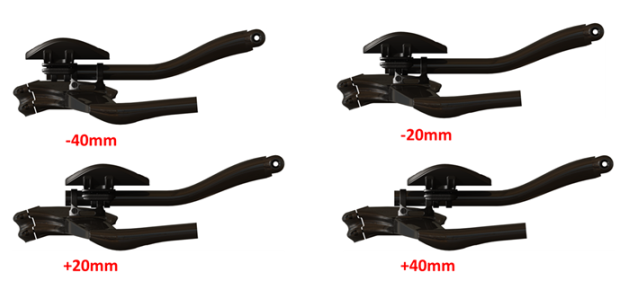
The pads can go up or down, wide or narrow, angled in or out. Even the extensions themselves can angle up and down:
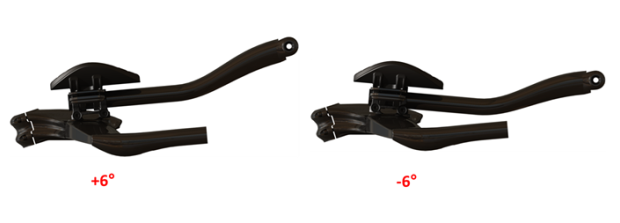
If you want to use the Alumina Clip instead of the ‘Stealth, the process changes slightly. First, you must choose your base bar:
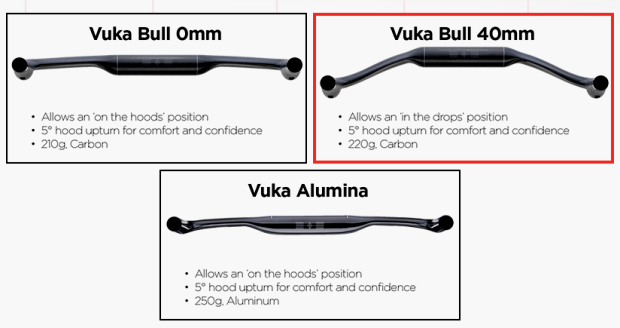
There is also a stem selection feature:
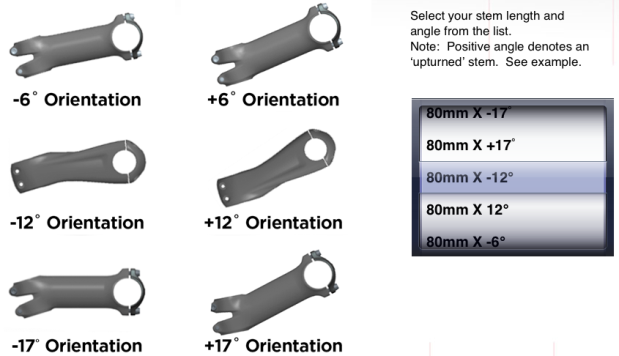
Similar to the discussion about headset spacers on the Vuka Stealth, you must already know your stem length and pitch ahead of time. Or, if you’re not sure, you can just pick one in the ballpark, and the app will tell you the closest fit output via different adjustments on the aerobar (i.e. pad height/placement). The Alumina program is also pre-set with red flags to tell you if the setup seems odd – ‘Are you really sure you want to use that +17 degree stem?’
Does this displace the fitter?
You may be asking yourself if Zipp is trying to do away with the retail bike fitter. Can the consumer do everything at home?
While Vuka Fit is certainly a big leap forward for manufacturer-provided tools, it does not replace the trained fitter. While it should be obvious, Vuka Fit does NOT tell you how to arrive at your Fit Stack and Reach – you must find that out by doing an actual bike fit. Additionally, there are many parts of the process that most consumers will likely not know on the front end. As a single example, the whole headset spacer decision is best left to an expert. Do you want 0mm of headset spacers and a 10mm spacer under the aerobar pads – or 10mm of headset spacers and 0mm under the pads? This decision is entirely dependent on the rider’s arm length, flexibility, and preference. In my experience, not many triathletes spend their spare time hemming and hawing over details such as that – which is why they hire a competent fitter.
Do I want Vuka Stealth or Vuka Alumina?
Which is right for you? Obvious price delta aside, what’s the difference? Zipp may dislike me for saying this, but I think it all comes down to ‘cool factor’. Yes, the Stealth boasts a small aerodynamic improvement over the Alumina. However, the Alumina offers more fit possibilities, simply because the stem is separate.
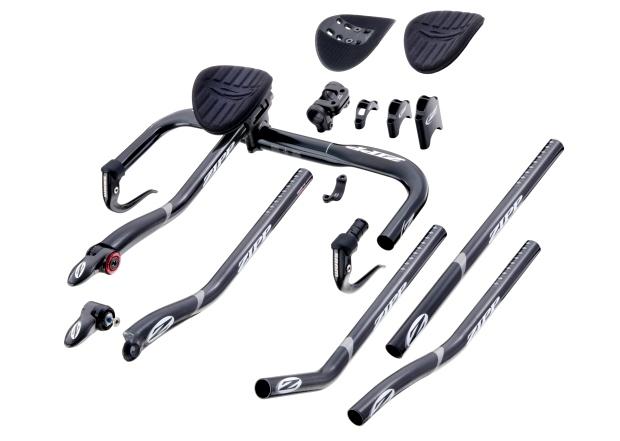
That being said, the Stealth likely offers the most adjustability of any integrated-stem-aerobar to date. If you can’t find your fit coordinates with the Vuka Stealth on your bike, you are probably riding the wrong frame.
The only real thing that should keep you from considering either Zipp aerobar is dependent on your bike. If it has an integrated front end (and proprietary bar), you cannot use a Zipp aerobar. The bike must have a traditional fork steerer tube.
The only criticism I have for the bars themselves are the lack of width options. Zipp offers a single width for all base bars, 42cm measured outside-to-outside. That translates to 40cm center-to-center. In comparison, they offer four widths of road bars – 40, 42, 44, and 46cm. To me, it makes a whole lot of sense to at least offer one more aerobar width option, even if only in the low-cost Alumina line.
Additionally, the Vuka Stealth is offered in a single drop measurement – 20mm. Compare that to the Vuka Bull carbon base bar, which comes in both 0mm flat and 40mm drop. Zipp chose to split the difference to minimize SKUs and inventory. We understand that and it’s fine with us – just understand it before you buy. If you have very long or short arms and want a base bar to suit that, you are likely better off buying the separate base bar and clip system.
Last, I imagine we will eventually want to see a couple more aerobar pad height options. Simply put, there is a big difference between the 25mm option and the 50mm option. If you want to go somewhere between that, you can do so with headset spacers (for example, a 25mm riser with 20mm of stem spacers – for 45mm total). I would like to see a 15mm and 35mm option offered in the future.
Let’s open it up to you, the reader. Is Vuka Fit what you’ve been waiting for? Is it useful to you? If you’re a bike fitter, will Vuka Fit help you sell more Zipp aerobars? Would you like to see more brands offer this type of tool?
All images © Zipp Speed Weaponry



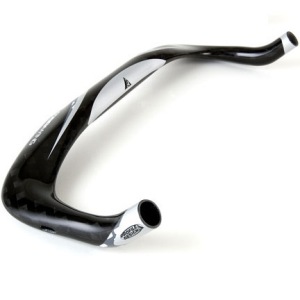
Start the discussion at slowtwitch.northend.network